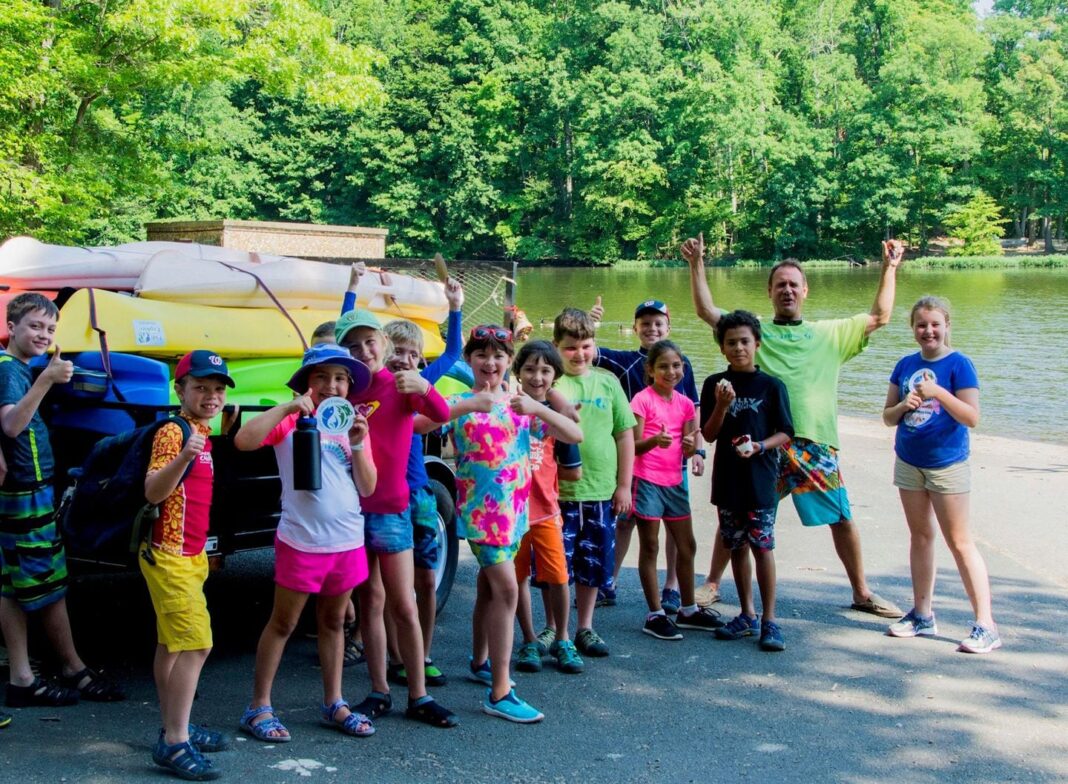6 Ways Summer Camps Are Going Green in 2024
By Beth Rush
You want to support camps that align with your values and dedication to the planet. If someone you care about is going to spend a week or more in nature, you want to be sure they leave without a trace. Plenty of summer camps are announcing plans to be kinder to the planet this year, but what does that look like? Here are things to keep an eye out for when choosing the most educational green summer camps.
1. Having Green Leadership
Camps only succeed because of the dedicated and passionate people running it. Around 60% of people want to live more sustainably, so camps can provide this in a safe space. Camps should dedicate some of their stuff to re-imagine their camp as one that encourages natural harmony. Here are some of the responsibilities green summer camps adopt when going greener:
> Publicizing eco-friendly goals on websites and flyers
> Recording environmental metrics like energy use
> Implementing new rules to cut carbon footprints
> Reaching out to local partners to amplify efforts
> Researching how camps are going green elsewhere
Additionally, camps can go a step further by incorporating technology, like a camp management system, to house their sustainability plans, goals and metrics. The added benefit is it eliminates unnecessary paper waste by bringing everything digital.
It allows streamlined communication with parents, too. You can have constant two-way communications and learn eco-friendly suggestions from online portals, such as packing in reusable containers instead of disposable bags.
2. Do Eco-Conscious Activities
It could be an art camp or engineering project — there are always ways to weave in relevant activities that incorporate nature. For example, planning a complex, scientific blueprint for a canoe might stress students out, especially if the camp runs it like a competition. Offer nature walks or forest bathing opportunities to let kids relax while experiencing the powerful, calming effects of focused time among the trees.
Consider taking art students on an awe hike, where they sketch or write in journals while they are among the trees and animals. Let them document what strikes them emotionally. Nudging campers to put 100% of their attention on nature’s splendor is a great way to encourage eco-awareness while weaving into lessons.
3. Teach in Context
If the camp is science-related, then you have a specific advantage to teach lessons with context. For example, you could demonstrate the growth abilities of trees in a healthy, ideal scenario versus trees in the grove nearby that have stunted because of climate change. Point to pieces of litter floating in the water or perform soil samples to see how nutrient-dense it is. Compare it to data from years ago.
These ideas allow campers to engage with the camp’s purpose while seeing the impacts of the climate crisis in action. It will make them more engaged about how nature is changing even though they didn’t notice it before. They will come away with a whole new perspective.
4. Meatless Meals
Summer camps are the ideal places for participants to practice independence in a new way with camp activities and stepping out of their comfort zone. This includes how they interact with their meals.
You could incorporate more meatless meals into the menu, inviting campers to try new things they may never taste at home, like tofu or a veggie-based version of their favorite pasta. Hopefully, they find something new they love that they’ll take back with them, making it a part of their family’s go-to meals.
There are plenty of fan-favorite meals that are naturally vegetarian, such as macaroni and cheese, that will bring a comforting vibe without feeling like there’s any pressure to shift diets too wildly.
5. Practice Waste Management
Controlling trash is how camps are going green. Waste management also encompasses energy and water. The first part of this process is incorporating the infrastructure required for eliminating the most polluting, wasteful and carbon-intensive practices.
For example, switching to LED-powered lamps instead of gas, setting up composting and recycling bins alongside the trash, and having campers take turns to review the grounds for litter keeps nature beautiful while giving them the tools and accountability everyone needs to perform.
Additionally, educational resources and tips must reach campers’ ears from leadership. Practicing waste management involves training and communication — only then is it useful. Instruct students and place helpful infographics around camp to teach them what is compostable and recyclable or how to reduce water usage.
6. Design Green Cabins
Lodging isn’t always in cabins. Sometimes, it’s in tents or yurts. Regardless of the situation, find ways to reduce their environmental impact. For example, if campers pitch tents, make sure they do it with the least damage to the earth as possible while guiding them on how to restore the areas as they’re packing up with Leave No Trace principles.
If the camp has conventional cabins, institute lights-out policies at reasonable times to reduce energy. Consider incorporating solar panels around the grounds to generate clean power. Some camps may even choose to set timers to allow comfortable yet reasonably timed showers to conserve resources.
How Camps Are Going Green
Green summer camps embrace ecological care from every angle. They look at operations and try to reduce water consumption and waste generation. They look at their curriculum and see what they can do to incorporate more naturally engaging activities. Finally, they promote eco-friendly ideals to everyone who might come to the camp. It will deepen people’s relationships with the planet and hopefully provide a new perspective on green living.
About the Author: Beth Rush is the green wellness editor at Body+Mind. She has more than five years of experience writing and editing articles covering topics like sustainable transit and the importance of green spaces in urban planning. You can find Beth on Twitter @bodymindmag.
Subscribe to Body+Mind for more posts by Beth!
